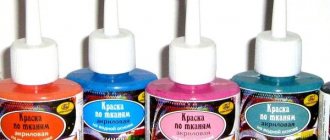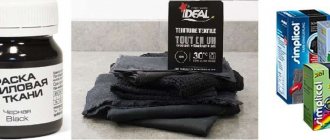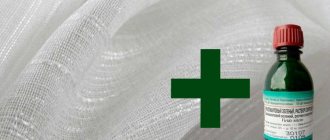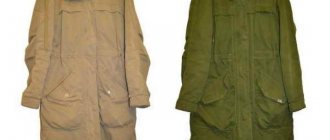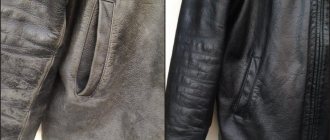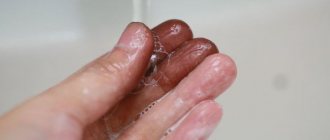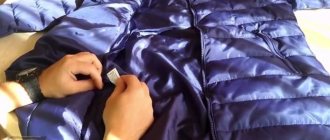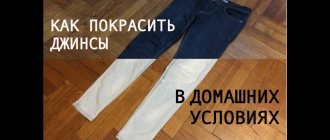Any thing can change its qualities over time due to frequent use, especially color. Clothes may fade, fray, or become stained. It also happens with woolen items, for example, sweaters or cardigans. It is quite difficult to purchase a really good product made from natural high-quality wool, since not everyone can afford the price of such clothing. But woolen clothes are practical (warm, soft and cozy), and rarely do any of us deny ourselves such pleasure.
If you really can’t bear to part with your favorite item, you can bring the item into proper shape yourself. One such way is to re-dye your sweater. At home, you should use special aniline dyes for yarn or natural dyes, that is, decoctions from tree bark, leaves, fruits, flowers, etc.
How to dye a sweater with natural dye
To use natural dyes, you first need to prepare a decoction. The crushed plants are boiled in soft water and then allowed to brew. The next step is this: pour the broth over the product you want to paint and simmer over low heat for about an hour. After the boiling time has passed, leave the sweater in the solution until it cools completely. Then squeeze and rinse in clean cold water (as described above).
You can make the sweater deep black again or redye it from a different color using a regular alcohol-based wood stain. First, the product needs to be washed and rinsed well. We spread the clothes prepared for processing on a flat surface. Getting ready to apply the product: take rubber gloves, a piece of foam rubber and an alcohol substance. The sweater needs to be thoroughly soaked with stain on both sides. After an hour and a half, the product should be rinsed in running water, squeezed and soaked in a vinegar solution (200 grams of substance per 10 liters of water). After 60 minutes of soaking, wring out the item again. Be sure to rinse the sweater several times and dry thoroughly.
Remember that when using any of these dyeing methods there is a risk of hopelessly ruining the item, so try them only on those sweaters that, if anything, you wouldn’t mind throwing away.
Briefly about the main thing
All natural and semi-natural fabrics lend themselves well to dyeing at home with acrylic, aniline and natural dyes. Before you dye synthetic fabric, you need to take a small piece and experiment. The easiest way to work is with acrylic paints - you don’t need to prepare the solution for a long time, heat it, or try to fix the color. A completely painted or painted item can simply be ironed through gauze after drying.
Question
Write in the comments, do you like designer items made from hand-dyed textiles?
Dyeing a sweater with aniline dye
One of the most popular ways to return your favorite item to its proper form is to use aniline dye. You can find out more about the correctness of your choice from the seller, and choose a truly suitable product. Usually the client selects a shade identical to the product or a color close to it.
How to measure the required dose? First you need to determine the dry weight of the product. If you intend to radically change the color of your sweater, you must first bleach it using Persol. True, such an impact can have a detrimental effect on the overall condition of the product, since woolen items do not really like radical methods of influencing the fibers.
What should you do next? Place the sweater in a bowl of warm water and prepare the dye according to the instructions on the package. If you want to give things a more saturated shade, the dosage of the substance can be increased. Add the dye to an enamel container (for example, a deep saucepan), transfer the wet sweater there and boil on the stove. Boiling should be carried out over low heat, constantly turning and stirring the sweater. After 20 minutes of such actions, remove the product from the container, dilute kitchen salt in a bowl with the remaining liquid in the proportions of 50 g of crystals per 2 liters of solution, lower the product back into it and boil for another 20 minutes.
After turning off the stove, do not remove the sweater from the dish until the dye has cooled completely. Then you need to squeeze it out and then rinse it several times in cold water. During the last rinse, a few milliliters of table vinegar are added to the basin (to finally fix the paint). When all these steps are completed, gently wring out the sweater, getting rid of excess liquid with a towel, spread the product on a flat surface and leave to dry completely. To prevent the item from acquiring an unpleasant odor, it must be turned over occasionally.
Dyeing technologies
There are several technologies, and their choice depends primarily on the type of paint and the desired result. In any case, before dyeing the fabric, it must be washed, dried and ironed. You can avoid this with new, unused fabrics. If there are traces of oil or fat on them, these places will not be painted or will have a different shade.
Source wikihow.com
Dyeing with aniline dyes
Dyeing with aniline-based compounds is done in very hot water. It is better in distilled water, but tap water is softened by adding tea soda to it.
The sequence of actions is as follows:
- dilute the dye according to the instructions in a small amount of water, filter and pour into a metal container;
- bring the volume of water to the required amount so that it is enough to completely immerse the fabric, add 2-3 tablespoons of salt for color fastness;
Advice! The product or piece of fabric must be weighed dry in order to correctly determine the amount of dye and water.
- pre-soak the fabric in warm water, then immerse it in a hot solution and place the container on the fire;
- bring the temperature of the liquid to 95 degrees and “cook” the textiles in it for at least half an hour;
- rinse the fabric several times in water with vinegar added.
This video shows how to dye fabric with aniline dye:
If you need to obtain uniform coloring, the product is smoothed with an iron before immersing in the solution; after soaking, do not wring out and try not to wrinkle too much. Dry in a horizontal position or hanging by the edges in a straightened form.
If you want to get the “varenka” effect, wring out the fabric and do not iron it. You can tie it in several places with strong thread or tie it with rubber bands.
For gradient dyeing, the fabric is suspended above a container with dye and lowered into it gradually.
Coloring with natural paints
Natural dyes do not tolerate boiling. The solution is simply heated to 50-60 degrees and the fabric is soaked in it. The longer it stays in it, the richer the color will be.
Painting with acrylic paints
To paint clothes black or any other color, the solution with acrylic paint does not even need to be heated, and the period of immersion of the fabric in it is limited to a few minutes. Or you can use spray paint and quickly paint the product or apply a design to it using a stencil.
Source postila.ru
It is much more interesting to work with a brush, sponge, fabric swabs or special rollers with relief, creating abstract or very real patterns on fabric. What happens depends on the application technique, the exposure time for the paint to dry and many other factors.
Instead of a long description, I suggest watching this video with a master class on using acrylic paints:
